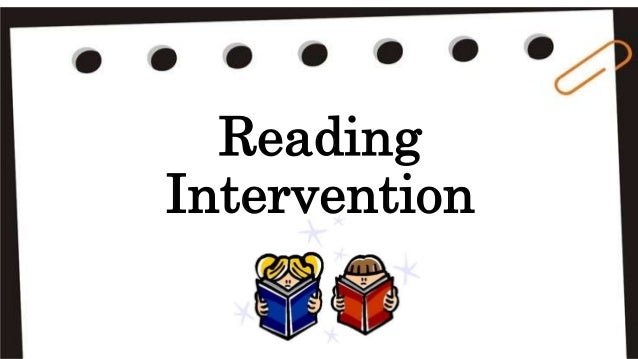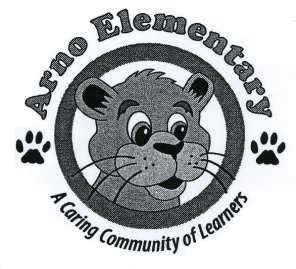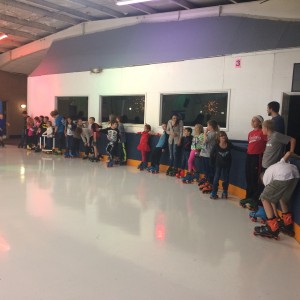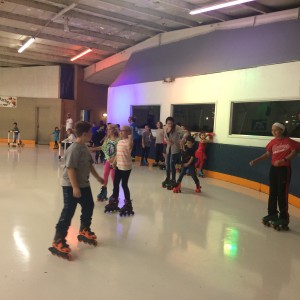Coming soon to Arno…
Oct. 31 Happy Halloween!!!
Halloween Parade 10:30
Student Half-Day- 11:40 Dismissal
Nov. 1
No events
Nov. 2
Sbonek IEP’s
Nov. 3
Boyer IEP’s
Roary the Lion Assembly
ICC
PTA Meeting 6:30
Nov. 4
No events

Happy Halloween!
- Monday, October 31st.
- 10:30 AM. Halloween Parade. Outside
- Classroom teacher will communicate with you if they are having any events to follow
Costumes:
- Students will wear their costumes to school.
- All costumes must be school appropriate
- No play guns or weapons of any kind
- Please do not allow your child to wear a mask. Masks tend to slip causing a possible trip and fall accident / injury.
Parade Path:
- Weather permitting. We will be outside for our parade. Our plan is to start the parade with our Kindergarten classes. We will walk through the building picking up each class and exit door # 8(5th grade doors). We will walk around the inside perimeter of the playground fence, and then down the way to enter through the office main door- the best place to stand and watch would be on the outer perimeter of the fence, and along the sidewalk to the office. Each class will then proceed back to their classrooms

INTERVENTIONS
At this time, as we embrace the MTSS model and attempt to provide early interventions for our students, our 31A intervention providers will be focusing on providing interventions to students in ELA ONLY at this time. I am well aware that there are students needing extra support in math. In addition to the extra time you are able to provide to these students, please plan to utilize volunteers to reinforce math skills. In January, we will reassess and adjust as needed.
As a result of a state grant, we will now have 6 intervention people plus Cathy ad Barb.
K-2 people will be outright assigned to a grade level for support- but still work under Barb
3rd– will be assigned the new 35 A person (Carrie Vaughn at the conclusion of long term)
4-5- will be serviced through Title 1 in all core areas
Barb and Cathy will then be reserved for students that we determine are most at risk (tier 3) and need that extra time. Many of their students will come from the Child Study Team Meetings
Remember, that as the classroom teacher, you are still responsible for the CORE plus Tier 2 interventions (Extra reading group, skills group, parent volunteers, grade level student sharing, etc.) that gets at that extra time as we do not have the personnel to take care of all our needs per room.
Thank you for your support with this initiative.
From the PTA
Happy Friday, Caring Cougar Families!
Flexible Classrooms: Providing the Learning Environment That Kids Need
Overview
Providing the Learning Environment That Kids Need
Flexible classrooms give students a choice in what kind of learning space works best for them, and help them to work collaboratively, communicate, and engage in critical thinking.
Since implementing flexible classrooms, Albemarle County Public Schools have noticed that:
- Their students’ grades have improved.
- Their students seem happier and more engaged.
- Their students are participating more and having more invigorating conversations.
How It’s Done
Giving Students a Choice in How They Learn
“From day one, I’ve said, ‘You may sit anywhere you like as long as you’re safe in our classroom,'” says Katie Collins, a Woodbrook Elementary School second grade teacher.
Becky Fisher, the director of educational technology at Albemarle County Public Schools, is interested in learning about the thinking that drives student choice. “What we’re really striving for are those choices that have a lot of thought behind them. We want kids to really be strategic about where they go,” Fisher says.
She painted the picture of walking into a classroom and seeing kids:
- Lying on the floor
- Sitting at low tables on their knees
- Standing up
When Fisher walks into a classroom, she asks the students the reasoning behind why they choose their particular learning space.
“Why are you standing right now?” she asks one TK student.
“Well,” says the student, “we’re using math manipulatives, and I move better when I’m standing up than when I’m sitting down.”
Fisher once heard a kindergarten student articulate that she was a belly reader. She loved reading on the floor while lying on her belly, her class was reading, and that’s why she was sprawled out on the floor. “That’s awesome that, at five or six years old, you know your preferences,” Fisher says. And that’s critical to their work.
Justin, a seventh grade student from Sutherland Middle School, was also able to articulate his preferred learning environment. He chooses a table and chair, unlike the couch that many of his fellow students choose. “When I get down into a couch and am more comfortable, it’s almost like it’s a bit distracting. It’s not exactly the environment I want to be working in, but for the other people, clearly they have their optimum working environments,” Justin says.
Krishan, also in seventh grade at Sutherland, likes that his teacher gives him a choice in how he works. “Since she lets us choose, we ultimately choose what’s best for us. We work better together and individually,” Krishan says.
The First Step
According to Lisa Molinaro, the principal of Woodbrook Elementary School, the first thing that needs to happen for Albemarle teachers to successfully create a flexible classroom is:
- The teacher must have a vision for his or her room.
- The teacher must be willing to say, “I’m going to throw out some of this stuff. I don’t need this traditional schooling equipment.”
Design a Collaborative Learning Space
“We’re really looking at how we support kids working collaboratively,” Fisher says. “And we can’t do it if we’re isolated in rows and every kid is an island.”
She believes that Albemarle classrooms work well with these design elements:
- They have at least three kinds of classroom seating.
- They use flexible bookshelves.
- Instead of individual workspaces, they use large round or rectangular tables, or put four desks together to form a more collaborative space.
“You’ll see flexible bookshelves that can be moved so that the room can be totally opened up — or little nooks and crannies can be created — so that everybody can see everybody, and we can participate as a community,” Fisher says.
Create a Variety of Seating Options
“My kids love to be under things, behind things, around things,” says Collins about her second grade classroom. “We have five-gallon buckets in my room that we sit on. We sit on crate seating that I made in my backyard out of a crate and some plywood and some foam. And I also just threw a lot of pillows on the floor.”
For classroom seating, Collins also uses:
- Couches
- Chairs
- Bunk beds
- Canoes
Fund Your Flexible Classroom: The DIY Approach
Teachers at Albemarle use these low- to no-cost strategies to furnish their classrooms:
- Seasonal purchase: Teachers purchase furniture from college students the week that they leave campus after graduation or for the summer. This is the time when students often want to get rid of most of their belongings, and they will give them away or sell them at a cheap price.
- Parent donations: Teachers ask parents for furniture. Cheryl Harris, a seventh grade language arts teacher at Sutherland, asks her parents to donate furniture at the beginning of the year. She started to build her collection by saying, “If any of you have a couch or a chair that you have just sitting around, the kids would like to read on it, and it could be a reading corner.” The flow of donations grew and grew from there because parents wanted to contribute to their kids’ learning environment.
- Previously used: Teachers purchase items in good condition from a Salvation Army or Goodwill. Second-hand shops in upscale neighborhoods or college towns will usually house quality finds.
- Crowdsourcing: Teachers set up a crowdfunding campaign, like DonorsChoose, Classwish, or GoFundMe, and have their students send their online campaign to family, friends, and parents to raise money for classroom furniture.
Fund Your Flexible Classroom: The District Approach
Over the past ten years, Albermarle district leadership has been very intentional in changing the physical nature of classrooms. Although not every classroom in its 26 schools has gotten a makeover, when the district budgets for a furniture-replacement cycle, there are some core pieces to redesigning a classroom. Before picking those core pieces, teachers need a vision for redesigning a classroom, and they should be willing to get rid of the traditional school furniture for more innovative pieces.
When comparing quotes for traditional and more innovative furniture, Fisher was delighted to learn that the cost is almost the same. “You pay roughly the same amount, and our durability has been good. There has been no reason to not go in that direction,” she says.
When Albemarle “does” a room, you’ll see:
- Flexible seating: Albemarle provides at least three different choices of seating for students — so you might see a stool, a beanbag, or chairs that look more traditional but allow kids to rock without tipping over.
- Teacher stations, not teacher corners: Instead of a teacher corner taking up 25 percent of the classroom, teachers have workspaces similar to students’ workspaces. The amount of real estate teachers now use is minimal, giving more space in the classroom for creating student corners, or the ability to move furniture around.
- Flexible tables: Many tables have wheels on them, making it easy to reconfigure a room. Albemarle also chooses big tables, round or rectangular, to support collaborative work. Tables can be written on, as well as flipped up, converting them into whiteboards. They also come in different heights — some are standing desks, others are more traditional heights, and some are low to the ground.
Evolving the classroom space to meet students’ individual needs impacts how they learn, how they interact, and the entire classroom experience. Moran has noticed that when a learning space evolves, students’ work improves immensely, their grades improve, and “just the conversations they have with each other are so invigorating to hear,” Moran says.
Resources
- Rethinking the Classroom: Spaces Designed for Active and Engaged Learning and Teaching
- Class Set-Up Tool (Scholastic)
- Classroom Redesign Ideas (The Third Teacher+)
- Clever Classrooms: Summary Report of the HEAD Project (University of Salford, Manchester)
- Teaching for Learning: A Philosophical Approach to Classroom Design – Five Basic Principles (Center for the Enhancement of Teaching and Learning)
CHECK THEM OUT ON THE WEB
Exciting news from the world wide web! Check out all of our teacher blogs/sites for more information
All staff websites or blogs are listed in the Blogroll on the right side of this blog’s main page. Keep up the great work in creating a web presence for your classrooms!






